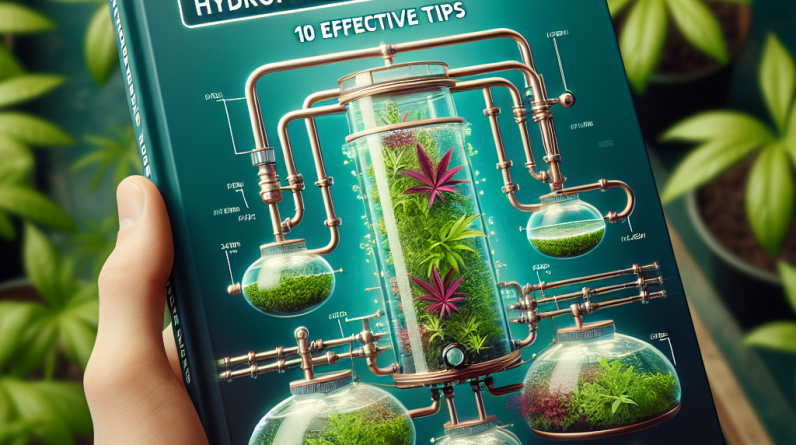
1. Understanding the Basics of a Hydroponic Water System
What is a hydroponic water system?
A hydroponic water system is a method of growing plants without soil, instead using nutrient-rich water solutions to deliver essential minerals directly to plant roots. In 2025, these systems have become more efficient and accessible, allowing both hobbyists and commercial growers to produce healthy crops with less land usage.
Unlike traditional gardening, a hydroponic water system relies on precise water management to optimize plant growth. This method reduces water waste by recirculating nutrient solutions, making it eco-friendly and cost-effective over time.
For beginners, understanding how a hydroponic water system operates is crucial. It involves components like reservoirs, pumps, and aerators that work together to maintain the ideal environment for plant roots. As technologies advance, so do the capabilities of these systems, providing better control and higher yields.
Benefits of using a hydroponic water system in 2025
One of the biggest advantages is increased efficiency; hydroponic systems can grow plants up to 25-50% faster than soil-based methods. Additionally, they use up to 90% less water since the recirculation minimizes waste.
With climate challenges and soil depletion issues, hydroponic water systems provide a sustainable alternative for food production. In 2025, urban farms especially benefit from vertical hydroponic setups that maximize limited space.
Furthermore, these systems reduce the need for chemical pesticides and herbicides, as theyâre contained environments with controlled conditions. This results in healthier produce that is safer for consumption.
2. Choosing the Right Hydroponic System for 2025
Types of hydroponic systems available
In 2025, growers have a variety of hydroponic systems to choose from, each suited for different plants and scales. Some popular types include Nutrient Film Technique (NFT), Deep Water Culture (DWC), and Aeroponics. Each offers unique advantages depending on your goals and environment.
NFT systems circulate a thin film of nutrient solution over plant roots, ideal for leafy greens. DWC suspends roots in aerated water, perfect for faster growth of larger plants. Aeroponics, which mist roots with nutrient solution, is gaining popularity for its efficiency and minimal water use.
Choosing the right system depends on factors like space, budget, and crop type. For example, small-scale hobbyists may prefer compact DWC setups, while commercial farms might invest in large-scale NFT systems for mass production.
Key considerations when selecting a hydroponic water system
When making your choice, consider factors such as system maintenance, scalability, and environmental control. Itâs important to evaluate how easy it is to monitor water quality, manage pH levels, and prevent issues like algae growth or root diseases.
Cost is another critical aspect. While some systems require a higher initial investment, they may offer better long-term savings through increased efficiency and yields. Additionally, look into compatibility with automated monitoring tools that are enhancing hydroponic systems in 2025.
Lastly, think about the type of crops you plan to grow. Certain hydroponic water systems are better suited for specific plants, so research your options thoroughly to ensure optimal results.
2025. Future Trends in Hydroponic Water Systems
Emerging technologies
Looking ahead to 2025, innovation in sensor technology and automation is transforming hydroponic water systems. Smart sensors monitor water quality, nutrient levels, and plant health in real-time, allowing growers to make precise adjustments remotely.
Artificial intelligence (AI) and machine learning algorithms suggest optimal watering schedules, nutrient mixes, and lighting conditions. These advancements drastically improve yields and reduce resource usage, making hydroponic farming even more sustainable.
Additional trends include the integration of renewable energy sources like solar panels to power water pumps and sensors, further reducing environmental impact and operational costs.
Global impact and scalability
In 2025, hydroponic water systems are being adopted worldwide, especially in arid regions where traditional agriculture is challenging. Scalable modular systems allow farmers to expand quickly and adapt to local conditions.
This scalability helps address food security issues in urban areas and developing nations, providing fresh produce year-round without the need for vast land areas or soil inputs.
As global interest grows, collaborations between technology companies and agricultural organizations are accelerating the development of more affordable, efficient, and environmentally friendly hydroponic water systems.
Frequently Asked Questions
- What is a hydroponic water system?
- A hydroponic water system is an innovative gardening method where plants grow in nutrient-rich water instead of soil, allowing for faster growth and more efficient resource use.
- How do I maintain my hydroponic water system?
- Regular maintenance involves monitoring water pH levels, nutrient concentrations, and ensuring pumps and aerators are functioning properly. Cleaning reservoirs and replacing nutrient solutions periodically are also essential tasks.
- What are the most common types of hydroponic water systems?
- Common types include Nutrient Film Technique (NFT), Deep Water Culture (DWC), and Aeroponics, each suited for different plant types and growth scales.
- Can a hydroponic water system be used indoors?
- Absolutely! Indoor hydroponic systems are popular for urban farming and home gardening, especially with compact designs that fit small spaces.
- Why is the hydroponic water system important in 2025?
- In 2025, hydroponic water systems are essential for sustainable agriculture, enabling higher yields with less water and land, and supporting food security amid climate change and urbanization.








